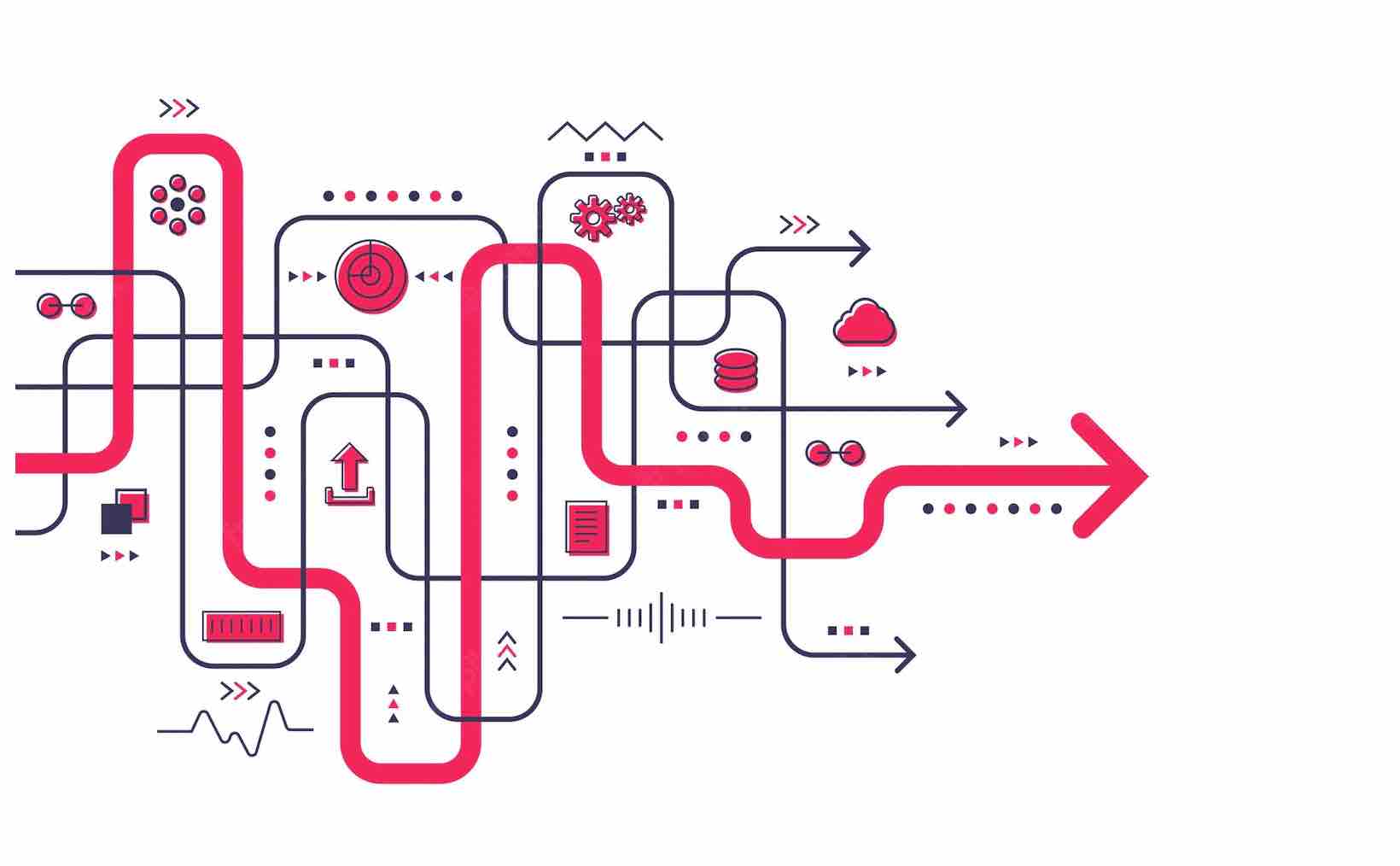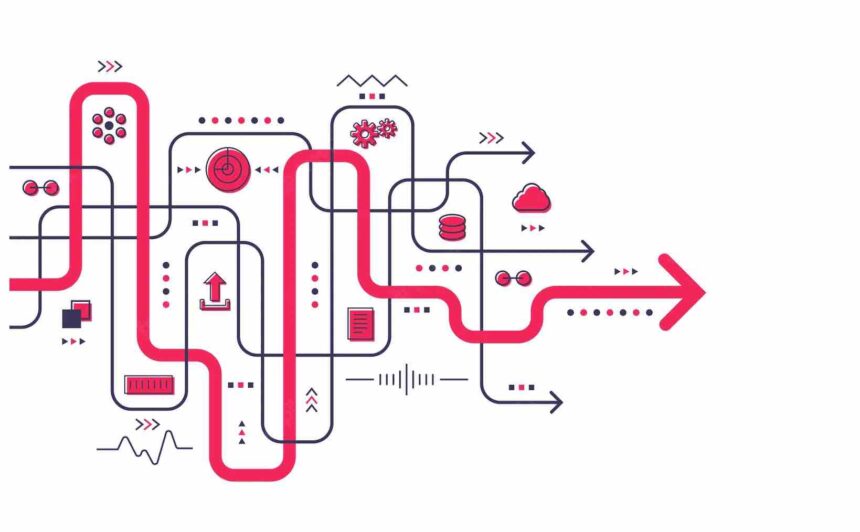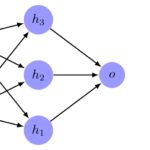
Introduction
The new age of computing is heavily reliant on machine learning and the algorithms that power it. These algorithms process and understand large amounts of data, allowing machines to make predictions and decisions without human input.
There are dozens of machine learning algorithms, each with strengths and weaknesses. This post will explore the top 20 most commonly used machine learning algorithms and discuss what makes them unique.
Table of contents
What is Machine Learning?
First, let’s take a look at what exactly machine learning is. Arthur Samuel popularized the term in 1959 and defined it as “the ability of a computer program to improve its performance through experience.” This means that the algorithms used can make predictions or decisions based on the data they have been given.
Machine learning can be broken down into four main categories: supervised learning, unsupervised learning, semi-supervised learning, and reinforcement learning. Each of these categories relies on slightly different algorithms and approaches to machine learning, but all use advanced mathematical concepts to process large amounts of data.
Also Read: Introduction to Machine Learning Algorithms
Top 20 Machine Learning Algorithms
Below, we will look at the top 20 most commonly used machine learning algorithms. These algorithms are used across many industries and fields to help machines make predictions and decisions.
Linear Regression
Perhaps the most commonly used machine learning algorithm, linear regression, predicts the relationship between two variables. This simple algorithm is used to make linear predictions based on a set of training data. Linear regression can be used for classification and regression problems, and it is often one of the first algorithms people learn when they start machine learning.
In linear regression, you use data from the past to predict the likelihood of particular outcomes in the future. This algorithm is commonly used for financial forecasting, customer segmentation, and risk modeling.
Logistic Regression
Like linear regression, logistic regression predicts the relationship between two variables. However, instead of predicting continuous values like a real number or percentage, logistic regression predicts whether an outcome will occur. As such, it uses a binary classification model to make predictions.
Logistic regression is often used in marketing and fraud detection applications, where the goal is to identify which customers or transactions are likely to be fraudulent. It can also be used to predict whether a customer will respond positively to an advertisement.
Support Vector Machines
Support vector machines, or SVMs for short, are used for regression and classification problems. They work by using past examples to build a model that can be used to classify new data points. SVMs are one of the most powerful classification algorithms available, and they have been shown to outperform other popular classification algorithms in many different situations.
A hyperplane is used to separate different classes of objects in high-dimensional data. The distance between this hyperplane and the nearest points on either side determines how well the algorithm can classify those two data points.
One-Class SVM
Much like regular SVMs, one-class SVMs are used for classification problems. However, this algorithm uses a hypersphere instead of using a hyperplane to identify which data points belong to the same class. It can encompass only a single class of data points, allowing it to be used for novelty or outlier detection.
Like SVMs, margin violations are allowed, often leading to better prediction performance. However, this also means that one-class SVMs can have higher variance and are more sensitive to overfitting than regular SVMs.
Decision Trees
If you’ve ever seen a flowchart or flow diagram, then you’ve seen a decision tree in action. As the name suggests, decision trees are used to make decisions based on the data that has been provided. Each branching point in the diagram represents an algorithm that will be executed on the input data. This process is repeated for each branch until a final decision is reached at the end of the tree.
Decision trees are commonly used for classification problems, particularly those with many classes and features. They are also used for regression problems, where the goal is to predict continuous values rather than a definite outcome.
Random Forest
A random forest is used to build multiple decision trees based on the same training data. As each tree is generated, random subsets of the data are used to train the tree. This process is repeated for each individual tree in the forest, which means that there will be thousands or even millions of different decision trees within a single model.
In comparison to individual decision trees, random forests are more robust and less prone to overfitting. They are also faster to train, handle missing data better, and have better predictive performance than individual decision trees. However, they require a larger amount of training data for the model to work effectively.
Isolation Forest
The isolation forest is to the decision tree what One-Class SVM is to SVM. In other words, it uses random subspaces to identify outliers within a dataset. These anomalies are then further examined to see if they are truly outliers or just part of the normal distribution. Isolation forests detect the distance of a data point from the rest of the data set and can deal with both numerical and categorical features.
Sampling techniques are used to generate the initial data points, which are then fed into a series of random forest models. This is not necessarily possible with other algorithms, making the isolation forest a particularly useful tool for outlier detection.
Gradient Boosting
Gradient boosting is a powerful machine learning algorithm that combines multiple “weak learners” into a single predictive model. For example, it could be used to combine the output of several decision trees or to combine multiple support vector machines. The result is an algorithm that often outperforms the random forest and other machine learning algorithms in terms of predictive performance.
A gradient descent algorithm is used to iteratively improve the predictive performance of each individual “weak learner.” This is done by first computing an error for each learner in the gradient boosting model. Using this error value, known as the loss function, a weighted average of these models is computed. This weighting determines how much influence each weak learner has on the final model. The final step is to reapply the gradient descent algorithm using this new weighted average as the starting point, leading to improved performance with each iteration of the algorithm.
Neural Networks
Neural networks are a type of machine learning algorithm that is loosely based on the structure and function of the human brain. They consist of several interconnected nodes, commonly referred to as neurons, which can be configured to process data differently. Weights are assigned to the connections between each node, allowing the network to “learn” from the provided data.
Neural networks are particularly useful for classification problems, such as image recognition, speech processing, and natural language processing. For example, they can be used to identify objects in an image, recognize the words being spoken in a conversation, or translate text from one language to another.
Principal Component Analysis
Next, PCA, or principal component analysis, is a pattern-detection algorithm commonly used in conjunction with neural networks. It works by finding a direction within a dataset that maximizes the variance of that data. This allows it to reduce the dimensionality of a dataset by pulling out patterns and trends, which can then be used for more detailed analysis.
Linear Discriminant Analysis
LDA, or linear discriminant analysis, is similar to Fisher’s linear discriminant analysis used in statistics. It uses data analysis to predict a categorical output based on multiple features. The relationship between features is used to make predictions about the future outcome. Both the features and the output can be continuous or categorical, making this a very versatile algorithm for many different types of machine-learning problems.
K-Means Clustering
To cluster simply means to categorize data points based on similarities. K-means clustering is a common technique for unsupervised machine learning, meaning it is used without any labeled training data. It works by assigning each data point to a cluster using the Euclidean distance between them, intending to minimize variance within groups while maximizing the similarity between clusters.
Hierarchical Clustering
Taking things one step further, hierarchical clustering uses an organized tree structure to cluster data points. This allows it to create clusters containing not just individual data points but entire groups. In essence, you build a hierarchy of clusters, with individual clusters being clustered themselves.
DBSCAN
Density-based spatial clustering of applications with noise, or DBSCAN for short, is another type of unsupervised machine learning algorithm. It works by taking into account the distance between data points and their density to create clusters that contain both close points and those with high densities. The highest-density clusters are determined first, which allows the algorithm to focus on these high-quality clusters before moving on to lower-quality ones.
Autoencoders
Another unsupervised algorithm, autoencoders, are neural networks that are used for dimension reduction. They take an input, encode it in a lower-dimensional space that preserves the most important information, and then decode the data into its original form. The end result is a compressed version of the original data that can be used for analysis and comparison.
Locally Linear Embedding
Locally linear embedding, or LLE for short, is a dimensionality reduction algorithm that uses low-dimensional manifolds to map high-dimensional data points. It finds similar data points and maps them to nearby locations on the manifold. This allows it to preserve local distances within the dataset while preserving global distances between different data clusters.
t-SNE
In addition to LLE, t-SNE, or t-distributed stochastic neighbor embedding, is another commonly used dimensionality reduction algorithm. It works by using a probability distribution over pairs of points to preserve important features within the data while minimizing noise and other irrelevant information. A 2D or 3D representation is then created based on this probability distribution, which can be used for visualization and analysis of the data.
Independent Component Analysis (ICA)
ICA is used to find independent components within a dataset. These “hidden patterns” can then be used to make predictions or extract more information about the data. It assumes that maximum one of the components in a given dataset is Gaussian and the other components are independent of each other.
Factor Analysis
Factor analysis observes variability in data. It seeks to identify a relatively small number of unobserved variables that explain the observed variability, called factors. It reduces the need for data collection by focusing on the relationships between existing variables.
This algorithm is commonly used in psychology to understand different cognitive and emotional states. For example, anxiety and depression are thought to be related to the same underlying factors, but we can only observe them through symptoms like fatigue, sleep deprivation, and difficulty concentrating.
Naive Bayes
Bayes’ theorem is a fundamental statistic theorem that allows us to make predictions about future observations considering the relations between different variables. Naive Bayes is a simple machine learning algorithm based on this theorem that assumes that each variable is independent of the others. This allows it to easily model complex data using only a small amount of training data. Naive Bayes is commonly used for classification tasks as a simple yet effective algorithm.
Bagging
Bootstrap aggregating, or bagging for short, is a type of machine learning algorithm that uses resampling techniques to create subsamples of the training data. This means that you can use individual data points multiple times to train a model, improving the algorithm’s overall performance. Once the models have been trained, they are combined in some way to make a final prediction.
Dimensionality Reduction
Finally, dimensionality reduction is another important technique for working with high-dimensional data. It refers to any method that reduces the number of dimensions in a dataset while preserving the most relevant information. Common methods include principal component analysis, k-nearest neighbors, and clustering algorithms like k-means or spectral clustering. With proper dimensionality reduction, we can gain important insights about our data and make more accurate predictions.
Also Read: Artificial Intelligence Labeling: Present and Future
Conclusion
We can use many different machine learning algorithms for different tasks, including dimensionality reduction, classification, prediction, and clustering. These algorithms can help us gain a deeper understanding of our data and make more accurate predictions using less training data.
Whether you’re working with images, text, or time series data, there is likely a machine learning algorithm that can help you analyze and make sense of your data. Give the above algorithms a try, and see how they can help you uncover hidden trends and patterns in your data!
Also Read: What is Unsupervised Learning?
References
DATAtab. “Regression Analysis: An Introduction to Linear and Logistic Regression.” YouTube, Video, 1 Feb. 2021, https://www.youtube.com/watch?v=FLJ0yYetywE. Accessed 14 Feb. 2023.
Econoscent. “Visual Guide to Gradient Boosted Trees (Xgboost).” YouTube, Video, 10 Oct. 2020, https://www.youtube.com/watch?v=TyvYZ26alZs. Accessed 14 Feb. 2023.
—. “Visual Guide to Neural Networks (Deep Learning).” YouTube, Video, 30 Mar. 2021, https://www.youtube.com/watch?v=2sff9uQZw8Q. Accessed 14 Feb. 2023.
Explained, Visually. “Support Vector Machine (SVM) in 2 Minutes.” YouTube, Video, 9 Sept. 2021, https://www.youtube.com/watch?v=_YPScrckx28. Accessed 14 Feb. 2023.
Learning, Intuitive Machine. “Decision Tree: Important Things to Know.” YouTube, Video, 7 July 2020, https://www.youtube.com/watch?v=JcI5E2Ng6r4. Accessed 14 Feb. 2023.
Murthy, Abhishek. “What Are Support Vector Machines (SVM) In Machine Learning?” Artificial Intelligence +, 26 Jan. 2023, https://www.aiplusinfo.com/blog/what-are-support-vector-machines-svm-in-machine-learning/. Accessed 14 Feb. 2023.
Starmer, StatQuest with Josh. “StatQuest: Linear Discriminant Analysis (LDA) Clearly Explained.” YouTube, Video, 10 July 2016, https://www.youtube.com/watch?v=azXCzI57Yfc. Accessed 14 Feb. 2023.
Team, Editorial. “How to Use Linear Regression in Machine Learning.” Artificial Intelligence +, 31 May 2022, https://www.aiplusinfo.com/blog/how-to-use-linear-regression-in-machine-learning/. Accessed 14 Feb. 2023.
Technology, Ibm. “What Is Random Forest?” YouTube, Video, 7 Feb. 2022, https://www.youtube.com/watch?v=gkXX4h3qYm4. Accessed 14 Feb. 2023.











